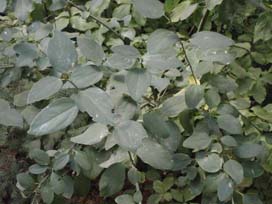
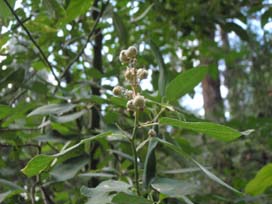
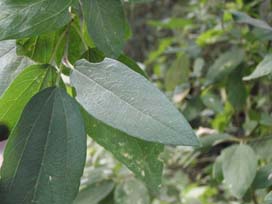
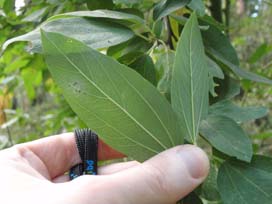
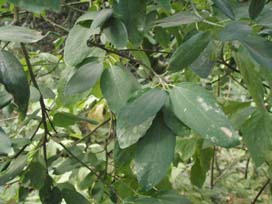
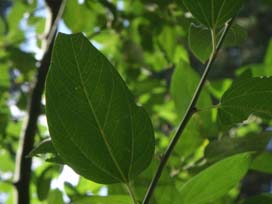
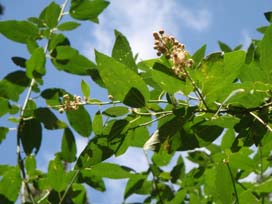
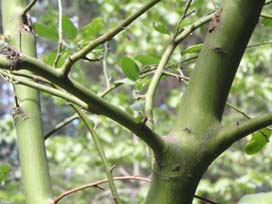
deerbrush
Ceanothus integerrimus
Family: Rhamnaceae.
Type: Small deciduous tree.
Branching: Alternate.
Leaves: Dark upper surface; undersurface has three prominent white veins, which is characteristic of this genus. The leaf shape is long and narrow.
Twig: Outer twigs are green, and even the main stem has a greenish hue until mature.
Fruit & Flower: Inflorencences of purple or blue lead to clusters of fruits that are capsules.
Miscellaneous: Ceanothus is associated with nitrogen-fixing bacteria, so it can colonize areas rapidly after disturbance. After it fixes nitrogen and deposits it in the soil, that facilitates recruits of other species. For this reason, it is typically seen in early successional areas, such as immediately after fire. Many plants in this genus have a common name of deerbrush or buckbrush; they are commonly eaten by deer because their leaves are quite nutritious, as a consequence of its nitrogen-fixing abilities.
 |
 |
 |
 |
 |
 |
 |
 |